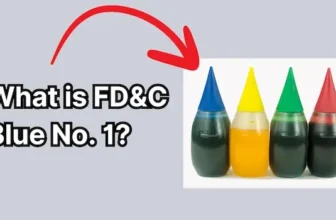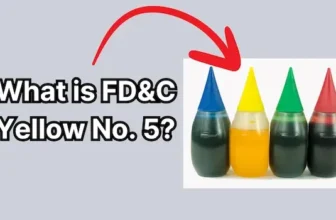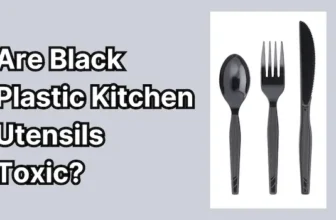If you’ve heard the word “Parabens” make the news on social media lately, you may be wondering, “What are Parabens exactly?” Or maybe you’ve heard that they’re bad or harmful for human health. Well, as a scientist with a Masters in Environmental Science, I’m here to explain the meaning of Parabens, along with providing a list of parabens to avoid.
I’ll try my best to explain the science along with credible sources.
My goal here at NonToxicOnly.com is to try and help educate consumers who are worried about their health, along with their family’s health and wellbeing.
So… what are Parabens exactly?
Parabens are a group of synthetic chemicals widely used in cosmetic and personal care products as preservatives.
Chemically, they are esters (organic compounds formed from an acid) of p-hydroxybenzoic acid and are valued for their ability to inhibit the growth of harmful bacteria, fungi, and mold, thereby extending product shelf life.
Despite their widespread application and long history of use, parabens have become a subject of public debate and scientific scrutiny.
Concerns have emerged regarding their potential to disrupt endocrine function, contribute to allergic reactions, and possibly increase risks related to fertility, reproductive health, or certain cancers.
This ongoing controversy has fueled a growing demand for “paraben-free” products and intensified research into the safety of parabens and the effectiveness of alternative preservatives.
| Year/Period | Event/Development | Details |
| 1894 | Discovery of Parabens | Identified as preservatives by British pharmacist John Brehmer. (1) |
| 1920s–1930s | Introduction to consumer products | Parabens are used in cosmetics, pharmaceuticals, and food products for their preservative properties. (2) |
| 1950s | Widespread use in personal care products | Became the standard preservatives in skincare and cosmetics due to their antimicrobial effectiveness. (3) |
| Early 1970s | FDA “GRAS” Designation | Several parabens are classified as “Generally Recognized as Safe (GRAS)” for food and cosmetic use in the U.S. |
| 1990s | Identification as xenoestrogens and endocrine disruptors | Scientific studies have begun to show that parabens can mimic estrogen and potentially disrupt the endocrine system. (4) |
| 2000s | Detection in humans and the environment | Studies detect parabens in urine, breast tissue, and environmental samples worldwide. (5) |
| 2015 | Regulatory restrictions in the EU and Asia | The EU bans isopropyl- and isobutylparaben in personal care products; restrictions are also enacted in Southeast Asia. |
| 2020s | Parabens as Chemicals of Emerging Concern (CECs) | Increasingly recognized as endocrine-disrupting chemicals with high detection rates in people and the environment. (6) |
Common Types of Parabens
There are several types of parabens, each derived from para-hydroxybenzoic acid (PHBA) and differentiated by the length and structure of their alkyl side chains.
The most common parabens found in consumer products include:
| Paraben Name | Structure (Alkyl Group) | Common Uses | Notes on Use and Potency |
| Methylparaben | Methyl (short chain) | Shampoos, lotions, facial cleansers, makeup | Most widely used; often combined with others (7) |
| Ethylparaben | Ethyl (short chain) | Similar to methylparaben | Common in combination with methylparaben (8) |
| Propylparaben | Propyl (medium chain) | Moisturizers, hair care, and shaving products | More effective against bacteria; higher estrogenic activity than shorter chains (8) |
| Isopropylparaben | Isopropyl (branched) | Various cosmetics | Less common; branched structure may increase estrogenic activity (9) |
| Butylparaben | Butyl (longer chain) | Sunscreens, makeup, lotions | Used alone or with others; highest estrogenic activity among common parabens (9) |
| Isobutylparaben | Isobutyl (branched) | Cosmetics, personal care | Less common; branched structure (9) |
Where are Parabens commonly found?
Parabens are widely used as preservatives and can be found in a broad range of consumer products, foods, and even some natural sources. Here’s a detailed breakdown:
1. Personal Care and Cosmetic Products
- Makeup (mascara, eye shadow, lipstick, foundation)
- Facial cleansers and scrubs
- Moisturizers and lotions
- Sunscreens
- Shampoos and conditioners
- Shaving creams and gels
- Toothpastes
- Baby products (lotions, wipes, diaper rash ointments)
Parabens are especially common in products with high water content, as their antimicrobial properties help extend shelf life and prevent spoilage. (9🍃)
2. Food and Beverages
- Processed foods (cereal-based snacks, dried meats, bakery goods)
- Beverages (beer, soft drinks, iced tea)
- Dairy products (frozen dairy, yogurt)
- Sauces, jams, jellies, pickles, syrups
- Canned and jarred foods (canned tuna, pineapple in packaging)
- Baked goods (muffins, apple pie)
- Some fruits and vegetables naturally contain parabens (blueberries, cucumbers, cherries, carrots, onions)
Parabens are often listed as methylparaben (E218), ethylparaben (E214), or propylparaben in food ingredient lists.
Studies show that more than 90% of food samples in some categories can contain measurable concentrations of parabens. (10🍃)
3. Pharmaceuticals and Medications
- Some over-the-counter and prescription drugs use parabens as preservatives to maintain product stability. (11🍃)
4. Household and Other Consumer Products
- Baby wipes
- Stain removers
- Pet shampoos
- Some textiles (sportswear, bedding, upholstery fabric)
- Some paper products
5. Environmental Presence
Due to their widespread use, parabens have been detected in dust, river water, and air, and are found in more than 90% of humans in the U.S., Canada, and Europe

List of Parabens to Avoid
Tips for Step-by-Step Identification
- Check the Ingredients List: All cosmetics and personal care products sold in stores or online are required to display a full ingredient list on the packaging.
- Look for “-paraben” Suffix: Scan for any ingredient ending in “-paraben”.
- Check for Paraben-Free Labels: Some products are specifically labeled as “paraben-free.” However, always verify by reading the ingredient list, as marketing terms like “clean” or “green” do not guarantee the absence of parabens.
- Be Aware of Synonyms: Occasionally, parabens may be listed as “parahydroxybenzoate” or similar terms, which are chemically synonymous with parabens
| Paraben Synonyms | Description & Paraben Connection |
| 4-Hydroxybenzoic acid | The parent compound for all parabens. Parabens are esters of 4-hydroxybenzoic acid (20). |
| 4-Hydroxybenzoic acid methyl ester | Another name for methylparaben; this is the methyl ester form of 4-hydroxybenzoic acid (21) |
| Methyl 4-hydroxybenzoate | Another name for methylparaben; same as above (21) |
| Ethyl 4-hydroxybenzoate | Another name for ethylparaben; the ethyl ester of 4-hydroxybenzoic acid. |
| Propyl 4-hydroxybenzoate | Another name for propylparaben; the propyl ester of 4-hydroxybenzoic acid. |
| Butyl 4-hydroxybenzoate | Another name for butylparaben; the butyl ester of 4-hydroxybenzoic acid. |
| Methyl p-hydroxybenzoate | Another synonym for methylparaben; “p” stands for “para” position on the benzene ring (20). |
| Propyl p-hydroxybenzoate | Another synonym for propylparaben. |
| p-Hydroxybenzoic acid | Another name for 4-hydroxybenzoic acid, the base molecule for all parabens. |
| p-Methoxycarbonylphenol | Chemical synonym for methylparaben; refers to the same structure (21). |
| Methyl parahydroxybenzoate | Another synonym for methylparaben (21). |
Parabens may also be hidden in the ingredient “fragrance” or “parfume”
Paraben Side Effects: Health Concerns and Controversies
The estimated average daily total exposure to parabens is 76 mg, with cosmetics and personal care products contributing 50 mg, pharmaceutical products providing 25 mg, and food accounting for 1 mg. (14🍃)
Hormone Disruption and Endocrine Effects
The primary health concern is their ability to act as endocrine disruptors.
Parabens can mimic estrogen, a key hormone, and potentially interfere with the body’s hormonal balance in both males and female. (8🍃)
Potential Problems:
- Disruption of reproductive hormone function, which may affect fertility, menstrual cycles, and fetal development. (12🍃)
- Some studies have linked paraben exposure to earlier puberty in girls and altered birth outcomes. (12🍃)
- Animal studies have shown that certain parabens (notably butyl- and propylparaben) can reduce sperm production and testosterone levels, and harm female reproductive development. (13🍃)
- Parabens have also been correlated with hypersensitivity reactions, obesity, and infertility in recent findings. (13🍃)
Parabens and Cancer Risk
- Parabens have been detected in breast tissue, including in samples from breast cancer patients, raising concerns about a possible link to breast cancer. (13🍃)
- Their estrogen-mimicking properties have led researchers to hypothesize a role in breast cancer development, as estrogen can fuel the growth of some breast cancers. (13🍃)
- However, studies investigating this link are conflicting and inconclusive. While some in vitro (cellular) studies suggest parabens can accelerate the growth of breast cancer cells, there is not enough human data to establish a direct causal relationship
Other Health Concerns
- Parabens can cause skin irritation and allergic reactions in a small subset of the population, especially with prolonged exposure or in sensitive individuals. (13🍃)
- Chronic exposure and bioaccumulation are concerns, as parabens have been detected in urine, blood, breast milk, and even the placenta. (8🍃)
- Some studies suggest parabens may negatively affect organs such as the spleen and stomach lining. (8🍃)
Environmental Impact
- Parabens are persistent in the environment, detected in water, soil, and wildlife.
- They may harm aquatic life, including coral, and their byproducts (formed when mixed with chlorinated water) may be more persistent and potentially toxic
Conflicting Evidence and Ongoing Debate
- Despite the concerns, many studies have found parabens to be non-teratogenic (interfere with normal fetal development), non-mutagenic, and non-carcinogenic at the concentrations typically used in consumer products. (14🍃)
- The majority of toxicological evidence comes from animal and in vitro studies, with limited and often inconclusive data in humans. (14🍃)
- Major health agencies, including the FDA and WHO, currently consider parabens safe at low levels, though they recommend continued research and monitoring. (15🍃)
- The European Union and some other regions have banned or restricted certain parabens (such as isopropyl- and isobutylparaben) in personal care products, especially those intended for children, due to potential risks and higher absorption in infants. (9🍃)
| Health Concern | Evidence Level | Notes |
| Endocrine disruption | Moderate (animal/cell) | Well-documented in animal and in vitro studies; human relevance debated (13) |
| Cancer risk | Low to moderate | Detected in breast tissue; no conclusive human link to cancer (12) |
| Reproductive harm | Moderate (animal/cell) | Effects on fertility and development in animals; limited/conflicting human data (12) |
| Skin irritation | Low | Occurs in sensitive individuals; generally rare (14) |
| Environmental impact | Moderate | Detected in water, wildlife; possible harm to aquatic life (8) |
The Potential Good News
Parabens don’t linger in the body for extended periods.
When our bodies are functioning well and not burdened by excessive toxins, they can typically eliminate parabens within about three days.
This suggests that if you can identify and remove the source of paraben exposure, their levels in your body can decrease significantly or even be eliminated altogether.
By minimizing your exposure to parabens, and assuming your body’s natural detoxification processes are working properly, your body should be able to handle lower levels of parabens on its own. (10🍃)
Regulations and Safety Guidelines
Paraben safety has been debated due to concerns about potential endocrine disruption and other health effects, prompting regulatory scrutiny and varying guidelines across different regions.
United States Regulations
The United States Food and Drug Administration (FDA) does not require cosmetics or personal care products, including those containing parabens, to undergo pre-market safety review or approval before being sold, except for color additives. (11🍃)
For the FDA to take action against a cosmetic for safety reasons, they must have reliable scientific information showing that the product is harmful when consumers use it according to directions on the label or in the customary way. (11🍃)
The Cosmetic Ingredient Review (CIR), an independent expert panel, has reviewed parabens and concluded they are safe for use in cosmetics at concentrations up to 0.4% for a single paraben and 0.8% for mixtures. (7🍃)
The FDA continues to monitor scientific data and may update guidelines if new evidence emerges. (11🍃)
State Specific Regulations:
Some U.S. states have enacted stricter rules.
For example, in 2019, California banned certain parabens (methylparaben, ethylparaben, propylparaben, and butylparaben) in specific cosmetic products, and propylparaben in food, due to health concerns. (16🍃)
Maine has advanced legislation (ME LD1908, the “Safe Cosmetics Act”) that bans the sale of cosmetics containing toxic substances linked to cancer, reproductive harm, and birth defects, specifically including parabens among the restricted ingredients. (18🍃)
New York is considering the “Beauty Justice Act” (NY S04265), which would prohibit the sale of personal care and cosmetic products with intentionally added restricted substances, including parabens, starting January 1, 2028. (18🍃)
Michigan has proposed legislation (MI HB5968) that, if enacted, would prohibit the sale and distribution of cosmetics containing hazardous chemicals, including parabens, effective January 1, 2027. (18🍃)
European Union Regulations:
The European Union has stricter regulations on parabens in cosmetics, guided by the Scientific Committee on Consumer Safety (SCCS). (17🍃)
Maximum allowed concentrations:
- For methylparaben and ethylparaben: up to 0.4% for a single paraben and up to 0.8% for mixtures. (9🍃)
- For propylparaben and butylparaben: the maximum total concentration is 0.19% for any one or any mixture, reflecting greater concern about their potential for endocrine disruption
The EU has banned the use of several parabens (isopropylparaben, isobutylparaben, phenylparaben, benzylparaben, pentylparaben) in cosmetics due to insufficient safety data or higher perceived risk. (16🍃)
The EU also restricts paraben use in products intended for children under three years of age, especially for those applied to the nappy area. (17🍃)
Global and Other Regional Standards
The World Health Organization (WHO) and International Organization for Standardization (ISO) have set acceptable daily intake levels and standards for parabens to harmonize safety across countries. (19🍃)
Most countries follow either U.S or European Union guidelines, or a combination.
| Year | Country/Region | Regulation/Ban | Parabens Affected | Products Affected | Reason/Notes |
| 2011 | Denmark | Ban on use of certain parabens in personal care products for children ≤ 3 yrs | Propylparaben, Isopropylparaben, Butylparaben, Isobutylparaben | Personal care products for children up to 3 years old | Precautionary measure due to potential hormone-like effects; children considered especially vulnerable |
| 2014 | European Union | Restriction on concentration; ban on some parabens in cosmetics | Isopropylparaben, Isobutylparaben, Phenylparaben, Benzylparaben, Pentylparaben (banned); Methylparaben, Ethylparaben, Propylparaben, Butylparaben (restricted) | Cosmetics and personal care products | Stricter limits due to potential endocrine disruption; special restrictions for children under 3 years |
| N/A | United States | No federal ban; some state-level restrictions (e.g., California) | Varies by state (e.g., methyl-, ethyl-, propyl-, butylparaben in CA) | Cosmetics, personal care products, some foods | FDA considers parabens safe at current levels; some states have enacted precautionary bans/limits |
Paraben Free Products
| Product Name | Type | Key Features | Suitable For | Paraben-Free |
|---|---|---|---|---|
| The Honest Company Shampoo Body Wash | Shampoo & Body Wash | Hypoallergenic, tear-free, botanicals (almond oil, jojoba, aloe, coconut), gentle formula | Babies, children, adults | Yes |
| Hask Sensitive Care Shampoo + Conditioner Set | Shampoo & Conditioner | Fragrance-free, no parabens, sulfates, silicones, phthalates, oat extract, pro-vitamin B5 | Sensitive scalp/skin | Yes |
| Amazon Basics Body Wash for Sensitive Skin | Body Wash | Unscented, dermatologist-tested, coconut oil, shea butter, soybean oil, glycerin, budget-friendly | Sensitive or easily irritated skin | Yes |
| Gilchrist & Soames Zero% Shampoo | Shampoo | No parabens, sulfates, phthalates, artificial colors, vitamin B5, light fragrance | All hair types | Yes |
| Peach & Lily Glass Skin Refining Serum | Serum | Brightens, firms, hydrates; alcohol-free, fragrance-free, vegan, cruelty-free | Sensitive/problem-prone skin | Yes (22) |
| ILIA The Base Face Milk Essence | Moisturizer | Hydrates, reduces redness, smooths texture; hyaluronic acid; vegan | All skin types, sensitive skin | Yes |
| CeraVe Body and Face Moisturizing Cream | Moisturizing Cream | Body Cream with Hyaluronic Acid and Ceramides, Daily Moisturizer, Oil-Free, Fragrance Free, Non-Comedogenic | For dry skin | Yes |
| CeraVe Hydrating Facial Cleanser | Face Wash | Hyaluronic Acid + Ceramides + Glycerin, Hydrating Cleanser For Normal To Dry Skin | For all normal and dry skin | Yes |
Disclosure: These may be affiliate links that may earn us a small commission. Helps to support NonToxicOnly.com’s mission to educate and spread science-backed information!
References:
- 🍃Sanchez, Mark. “Evolution of Paraben Research: Milestones and Advancements – Mild Soaps.” Mild Soaps – Because Nature Knows Best, 20 Jan. 2024, mildsoaps.com/evolution-of-paraben.
- 🍃Cashman, Allison L., and Erin M. Warshaw. “Parabens: A review of epidemiology, structure, Allergenicity, and hormonal properties.” Dermatitis, vol. 16, no. 2, June 2005, pp. 57–66, https://doi.org/10.1097/01206501-200506000-00001.
- 🍃“The History behind Parabens and Why They Are Prominent in Most Skincare Products.” Wild Naturals, wildnaturals.com/blogs/blog/the-history-behind-parabens.
- 🍃“The History behind Parabens and Why They Are Prominent in Most Skincare Products.” Wild Naturals, wildnaturals.com/blogs/blog/the-history-behind-parabens.
- 🍃Darbre, P. D., et al. “Concentrations of parabens in human breast tumours.” Journal of Applied Toxicology, vol. 24, no. 1, Jan. 2004, pp. 5–13, https://doi.org/10.1002/jat.958.
- 🍃Wei, Fang, et al. “Parabens as chemicals of emerging concern in the environment and humans: A Review.” Science of The Total Environment, vol. 778, July 2021, p. 146150, https://doi.org/10.1016/j.scitotenv.2021.146150.
- 🍃“Parabens.” Safe Cosmetics, 7 July 2022, www.safecosmetics.org/chemicals/parabens/.
- 🍃What Are Parabens, and Why Don’t They Belong in Cosmetics? | Environmental Working Group, www.ewg.org/what-are-parabens.
- 🍃“Parabens: What You Should Know about These Commonly Used Chemicals.” WebMD, WebMD, www.webmd.com/beauty/what-to-know-about-parabens.
- 🍃Garcia-Toledo, Aida. “Are You Eating Parabens? Hidden Sources of Parabens.” 3 Little Plums, 3 Little Plums, 20 Sept. 2021, 3littleplums.com/blog/are-you-eating-parabens.
- 🍃Commissioner, Office of the. “Parabens in Cosmetics.” U.S. Food and Drug Administration, FDA, www.fda.gov/cosmetics/cosmetic-ingredients/parabens-cosmetics.
- 🍃“What Are Parabens? And Are They Safe?” Cleveland Clinic, Cleveland Clinic, 7 Apr. 2025, health.clevelandclinic.org/what-are-parabens.
- 🍃Chatterjee, Sovona, et al. “Parabens as the double-edged sword: Understanding the benefits and potential health risks.” Science of The Total Environment, vol. 954, Dec. 2024, p. 176547, https://doi.org/10.1016/j.scitotenv.2024.176547.
- 🍃STL FP Volume 8 Number 2 -, et al. “The Health Controversies of Parabens.” Skin Therapy Letter, 8 Mar. 2018, www.skintherapyletter.com/family-practice/parabens-controversy/.
- 🍃Integration, Contently. “Are Parabens Bad for Your Health?” UPMC HealthBeat, 21 Nov. 2023, share.upmc.com/2023/04/are-parabens-bad/.
- 🍃Team, Ess. “Regulatory Standards for Parabens in the US EU and Global Markets.” EssFeed, 4 Apr. 2025, essfeed.com/regulatory-standards-for-parabens/.
- 🍃Europa, ec.europa.eu/health/scientific_committees/docs/citizens_parabens_en.pdf. Accessed 18 Apr. 2025.
- 🍃Kovalcik, Dave. “Three US States Propose to Ban Cosmetic Ingredients with Suspected Links to Cancer; If Enacted, Measures Will Ban Antimicrobial Parabens, Fragrance-Stabilizing Phthalates, and UV-Blocking Benzophenones: Legislation Monitor.” Industry Intelligence Inc., Industry Intelligence Inc., 1 Nov. 2024, www.industryintel.com/news/three-us-states-propose-to-ban-cosmetic-ingredients.
- 🍃Team, Ess. “Regulatory Standards for Parabens in the US EU and Global Markets.” EssFeed, 4 Apr. 2025, essfeed.com/regulatory-standards-for-parabens.
- 🍃“4-Hydroxybenzoic Acid.” Wikipedia, Wikimedia Foundation, 21 Aug. 2024, en.wikipedia.org/wiki/4-Hydroxybenzoic_acid.
- 🍃“Methylparaben.” Wikipedia, Wikimedia Foundation, 31 Mar. 2025, en.wikipedia.org/wiki/Methylparaben.
- 🍃HBR Staff. “Peach & Lily Review: Is This Skincare Brand Worth the Hype? – Must Read This before Buying.” Honest Brand Reviews, 12 Feb. 2025, www.honestbrandreviews.com/reviews/peach-and-lily-review/.
Read Next
Top 10 Best Non-Toxic Candles in 2025
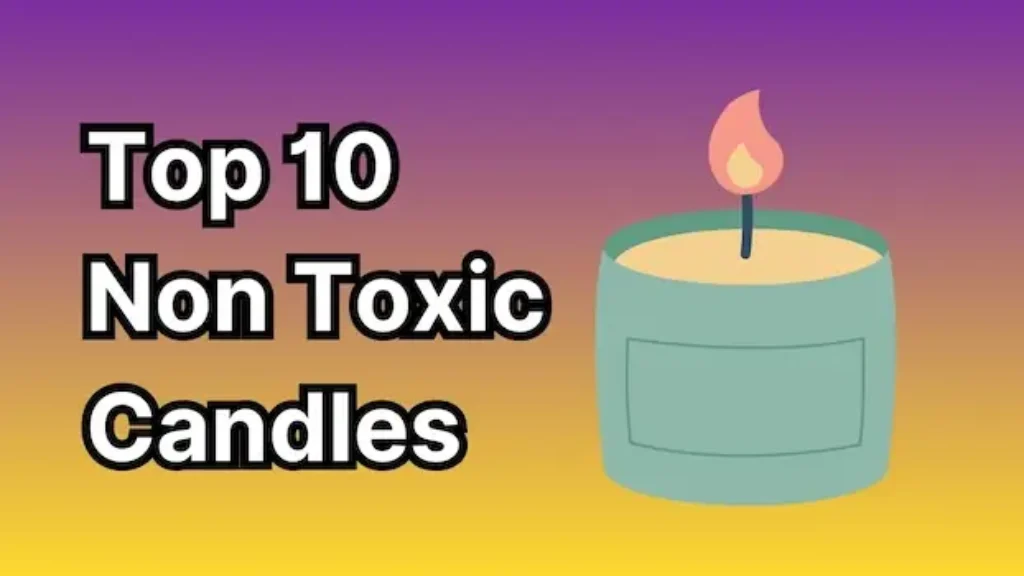
Top 10 Best Non Toxic Laundry Detergents
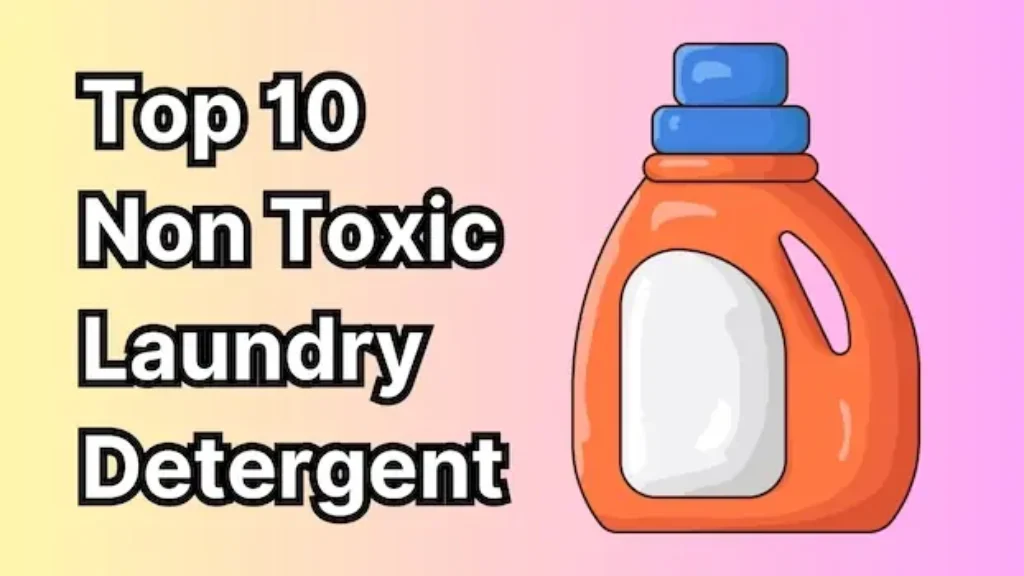
What is FD&C Red 40 Made of and its Side Effects?

What Is Yellow 5 (Tartrazine) and is it Bad for You?
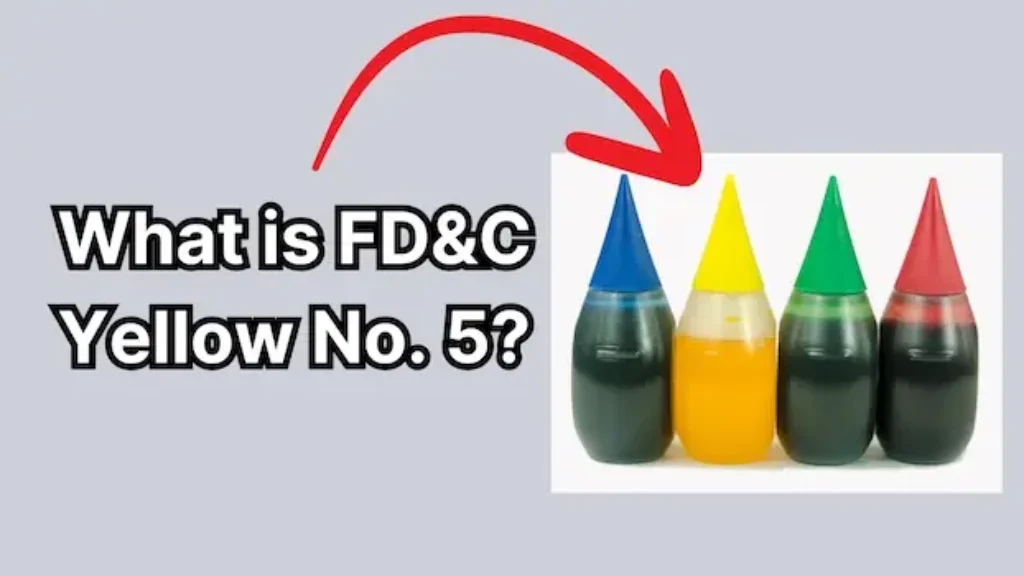
What Is FD&C Blue 1 and is it Bad for You?

PFAS: Meaning, Definition, and How to Avoid
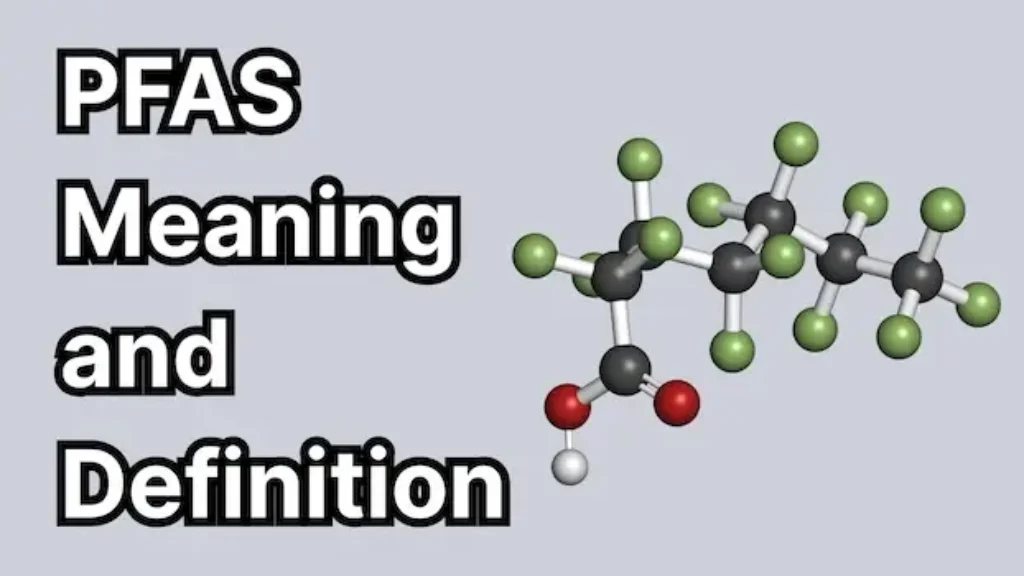
What are Phthalates? Pronunciation and Definition

What is Fragrance Made of? Ingredients List & Health Risks
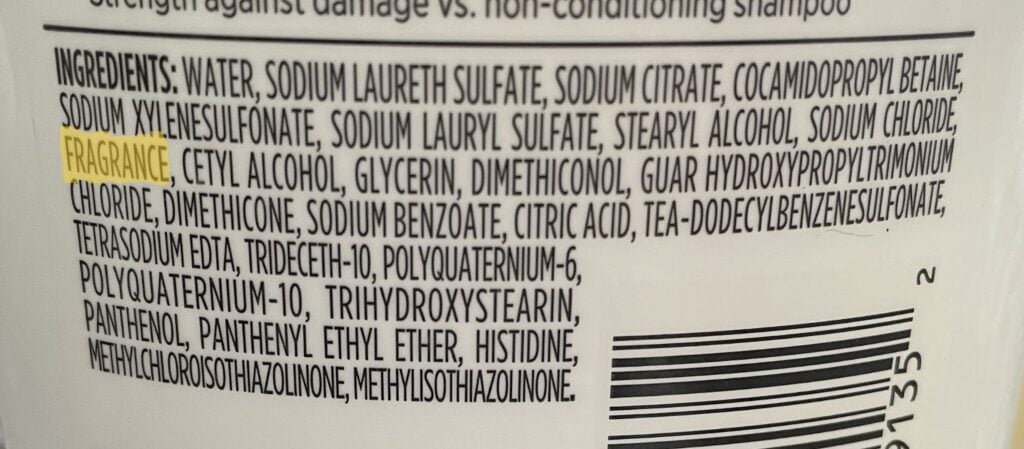
Are Black Plastic Kitchen Utensils Toxic?

